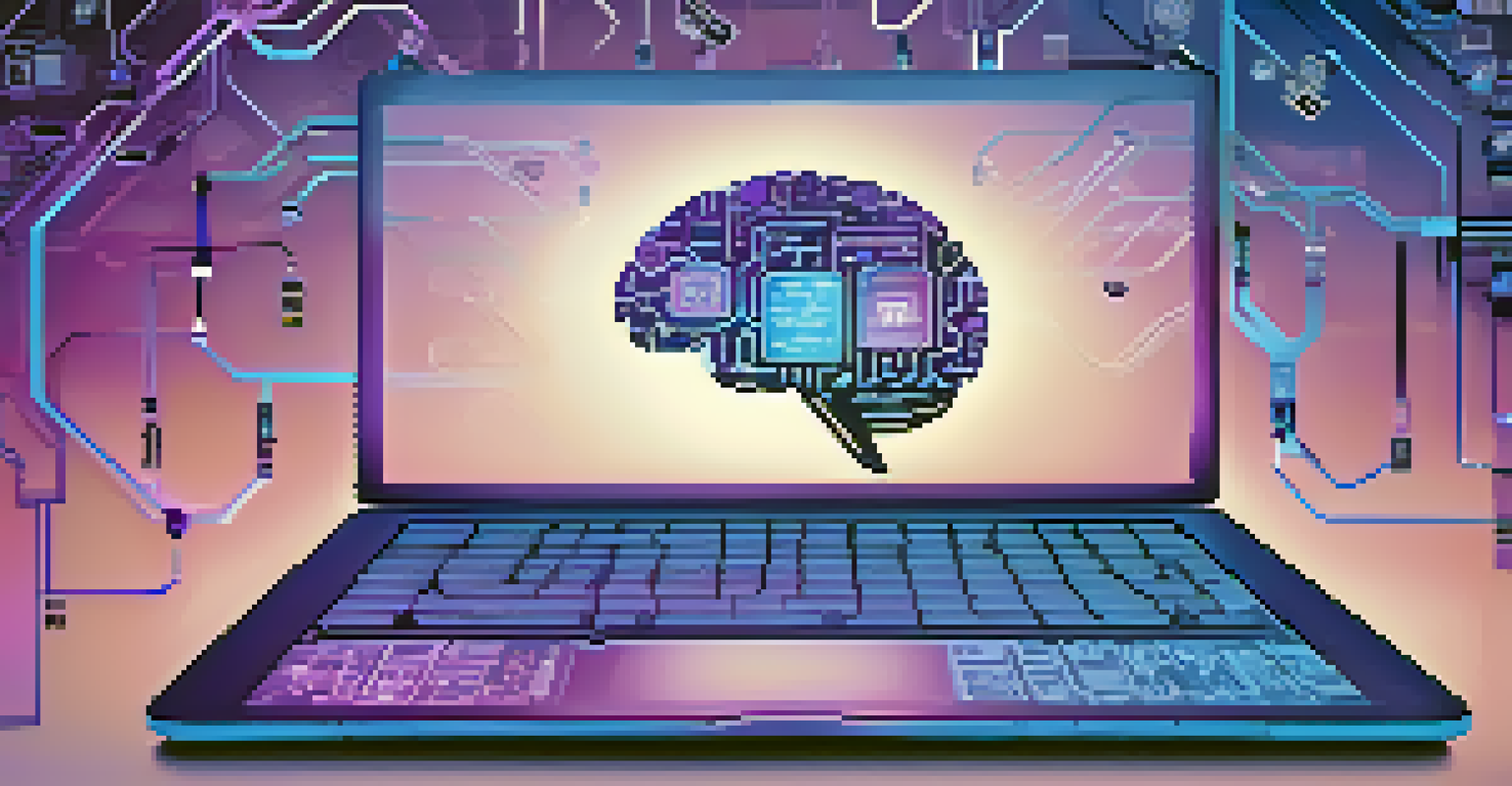The Future of Digital Forensics: Trends and Innovations

The Evolution of Digital Forensics in the Modern Era
Digital forensics has come a long way since its inception. Initially focused on recovering deleted files, it now encompasses a wide array of technologies and methodologies to investigate cybercrimes. As technology evolves, so does the need for advanced forensic techniques that can keep pace with increasingly sophisticated cybercriminals.
Digital forensics is a vital part of the investigation process in the digital age, where understanding technology is crucial to uncovering the truth.
In today's world, where almost everything is digital, the scope of digital forensics has expanded to include mobile devices, cloud storage, and even IoT devices. This broader focus not only aids in investigations but also helps in preventing future incidents by understanding criminal behavior in the digital space. For example, understanding how hackers operate can lead law enforcement to develop better defensive strategies.
Moreover, the integration of artificial intelligence and machine learning into digital forensics is revolutionizing the field. These technologies can process vast amounts of data quickly, identifying patterns and anomalies that a human investigator might miss. This shift towards automation is making investigations faster and more efficient, ensuring justice can be served more promptly.
Key Trends Shaping the Future of Digital Forensics
One of the most significant trends in digital forensics is the rise of cloud computing. As more data is stored off-site, forensic investigators must adapt to accessing and analyzing this data remotely. This shift not only requires new tools but also a thorough understanding of various cloud architectures and security protocols.

Another crucial trend is the increasing use of mobile forensics. With billions of people using smartphones, these devices are often the first point of contact in an investigation. Techniques for extracting and analyzing data from mobile devices are evolving rapidly, allowing investigators to pull critical information from apps and messaging services.
AI Revolutionizes Digital Forensics
Artificial intelligence is automating data analysis, increasing the speed and accuracy of investigations.
Finally, the growing importance of cybersecurity is influencing digital forensics practices. As organizations invest more in protecting their data, forensic experts are becoming integral to incident response teams. Their insights help in understanding breaches and crafting stronger security measures to prevent future attacks.
The Role of Artificial Intelligence in Digital Forensics
Artificial intelligence (AI) is transforming digital forensics by automating the analysis of large datasets. For example, AI algorithms can sift through thousands of emails or social media posts to identify relevant information in a matter of minutes. This capability not only saves time but also increases the accuracy of investigations.
The future of digital forensics lies in the integration of advanced technologies like AI, which will enhance our ability to analyze vast amounts of data quickly and accurately.
Furthermore, AI can enhance predictive analytics, enabling investigators to anticipate future criminal behavior based on historical data. By analyzing past incidents, AI can identify patterns that may indicate a potential threat, allowing law enforcement to act preemptively. Imagine a digital crystal ball that helps investigators stay one step ahead of cybercriminals.
However, the integration of AI in forensics isn't without its challenges. Ethical considerations around privacy and data handling are paramount. As AI tools become more prevalent, establishing guidelines that safeguard individual rights while allowing for effective investigations will be crucial.
Emerging Technologies Impacting Digital Forensics
Emerging technologies such as blockchain are also making waves in the digital forensics field. Blockchain's decentralized nature offers a new way of securing digital evidence, ensuring that tampering is easily detectable. This transparency can significantly enhance the integrity of digital evidence presented in court.
Additionally, the rise of virtual reality (VR) and augmented reality (AR) is introducing innovative ways to visualize data. For instance, VR can create immersive environments for investigators to examine the scene of a cybercrime, helping them understand the context and flow of events better. This level of interaction with data could change the way cases are presented in court.
Collaboration is Key to Success
Effective digital forensics requires collaboration among law enforcement, cybersecurity experts, and global agencies.
Moreover, advancements in data recovery techniques, such as quantum computing, are on the horizon. While still in its infancy, quantum computing promises to revolutionize the speed and effectiveness of data analysis, potentially solving complex cases that currently take months to analyze.
The Importance of Collaboration in Digital Forensics
As digital crimes become more complex, collaboration among various stakeholders is becoming increasingly important. Law enforcement agencies, cybersecurity firms, and digital forensic experts must work together to share knowledge and resources. This collaborative approach helps in developing comprehensive strategies to tackle cybercrime effectively.
For instance, joint training programs can help law enforcement officers understand the latest digital threats while equipping cybersecurity professionals with forensic investigation skills. By bridging the gap between different disciplines, we can create a more robust response to digital crime.
Additionally, international cooperation is vital, especially given the borderless nature of the internet. Cybercriminals often operate across multiple countries, making it essential for agencies worldwide to share information and resources. Initiatives that facilitate global collaboration can significantly enhance the effectiveness of digital forensics.
Challenges Facing Digital Forensics Professionals
Despite the advancements in digital forensics, professionals in the field face numerous challenges. The rapid pace of technology means that forensic experts must continually update their skills and knowledge to keep up with new tools and techniques. This ongoing education can be both time-consuming and costly.
Another pressing challenge is the sheer volume of data that needs to be analyzed. With countless terabytes of information generated daily, sifting through it can feel like searching for a needle in a haystack. Consequently, forensic teams must develop efficient methods to prioritize and analyze data without getting overwhelmed.
Emerging Tech Transforms Evidence
Technologies like blockchain and quantum computing are enhancing the integrity and efficiency of digital evidence handling.
Moreover, legal challenges around data privacy and admissibility of digital evidence can complicate investigations. As regulations evolve, forensic professionals must stay informed about legal standards to ensure their findings are valid and can be used effectively in court.
The Future of Education in Digital Forensics
As the field of digital forensics evolves, so too must the education and training programs that support it. Academic institutions are beginning to recognize the need for specialized programs that focus on the latest technologies and techniques in digital forensics. This shift will help cultivate a new generation of skilled professionals ready to tackle emerging challenges.
Additionally, online courses and certifications are making it easier for individuals to gain expertise in specific areas of digital forensics. This accessibility allows professionals to upskill and adapt to the changing landscape without the need for traditional degree programs. Think of it as a digital toolbox where you can pick and choose the skills you need to succeed.

Lastly, partnerships between educational institutions and industry leaders can enhance the relevance of curricula. By collaborating on research projects and internships, schools can ensure their programs align with current industry needs, ultimately preparing students for real-world challenges in digital forensics.